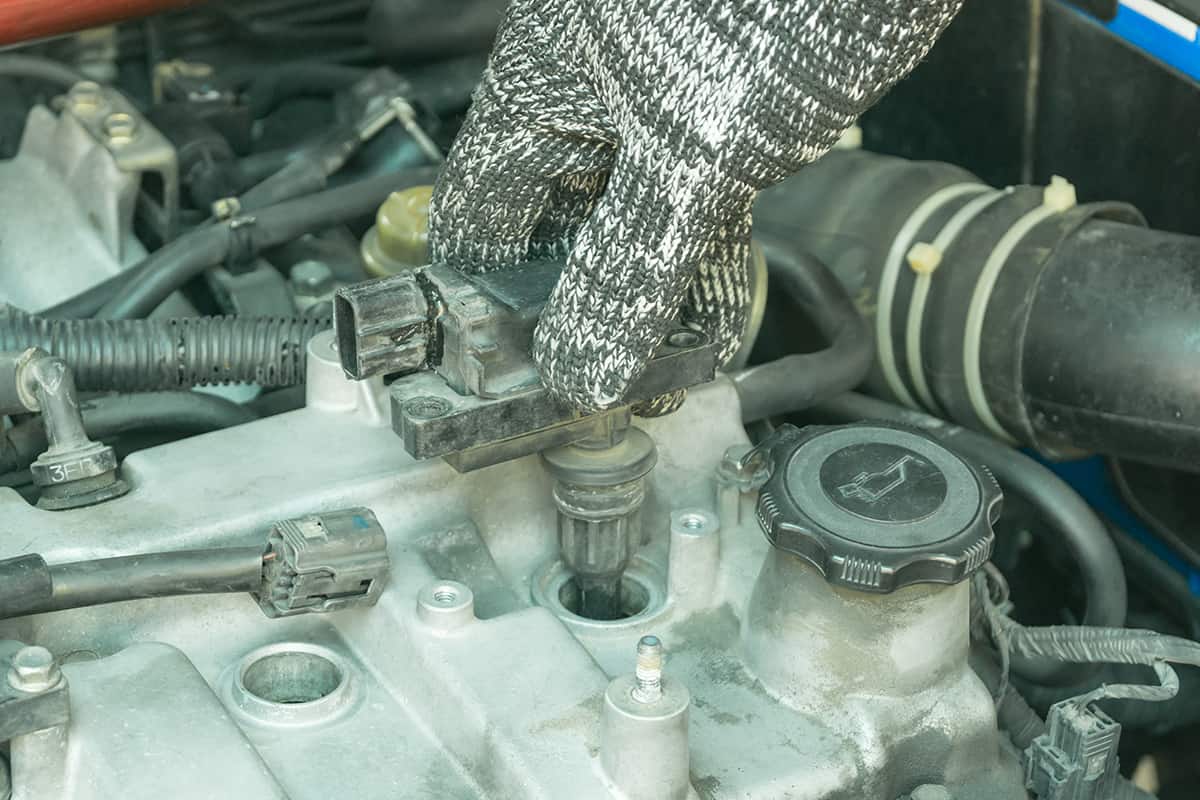Most of the time, people are scratching their heads over how to get their cars started. However, there may be specific instances where you want the opposite—to prevent your car from turning on completely. So, how do you do this?
There are various methods you can employ to prevent your car from starting and running, such as:
- Disconnecting the battery
- Removing the starter relay
- Deactivating the fuel pump
- Using ignition kill switches
- Engaging manual transmission locks
In this guide, we will learn more about these methods and offer step-by-step methods for doing them. This guide is designed to help readers understand how their car’s ignition system works, and we assume that you’re using this knowledge for good!
The Basics of a Car’s Ignition System

In a nutshell, the ignition system’s function is to generate a spark that ignites the fuel-air mixture within the engine’s cylinders, thus starting the engine. Without it, your car simply won’t start.
There are a few key components you should have a basic understanding of if you’d like to learn how to disengage your car’s ignition system.
- Spark Plugs: These are responsible for producing the spark that ignites the fuel-air mixture. They’re threaded into the engine’s cylinder head and are electrically charged by the ignition coil.
- Ignition Coil: Acting like a transformer, the ignition coil takes the low voltage from your car battery and transforms it into the high voltage necessary to produce a spark. It’s an essential part of the circuit that powers your spark plugs.
- Distributor: This component distributes the spark from the coil to the correct cylinder at the right time. Modern cars often use distributor-less systems and rely on computers for precision timing.
- Ignition Switch: This is what you turn with your key or press in push-button start systems. It controls the electrical flow across the ignition system and starts the engine when engaged.
How to Stop a Car from Starting
Now, let’s move onto the crux of the matter—how to stop your car from starting. There are all sorts of methods you can try to achieve this goal, and we’ll break them down into different categories found below.
Mechanical Methods to Stop a Car from Starting
The mechanical portion of your car’s starting system revolves around the movement and functionality of certain parts, which, when tampered with, can hinder the vehicle’s ability to start.
- Removing the Starter Relay: The starter relay is an electric switch that turns on your car’s starter motor. By removing or disabling it, you effectively stop the engine from cranking. The starter relay is usually found in the fuse box. Once located, it can be pulled out to prevent the car from starting.
- Disconnecting the Starter Motor: Found bolted to the engine, the starter motor is responsible for turning over the engine to start it. By disconnecting its wiring harness, you prevent the motor from receiving power, thus stopping the car from starting.
- Using a Steering Wheel Lock: These locks make the steering wheel immovable. While this device will not prevent your car from starting per se, it will prevent the driver/thief from steering and making a clean getaway with your car.
Fuel System Interventions to Stop a Car from Starting
The car’s engine needs fuel to operate. Disrupting the flow or availability of fuel is an effective way to halt the starting process.
- Deactivating the Fuel Pump: The fuel pump supplies fuel from the tank to the engine. By unplugging its electrical connector, found usually in the rear of the vehicle or under the rear seat, you cut off the fuel supply. Without fuel, your car’s engine won’t turn over.
- Emptying the Fuel Tank: While it’s a more extreme method, having no fuel in the tank ensures the engine won’t start. You can siphoning gas from your car rather than driving around until your gas tank is empty.
- Using a Fuel Cut-off Switch: These switches are installed in the fuel pump’s power supply. Flipping the switch halts the power to the fuel pump. You will have to get a fuel cut-off switch installed by a mechanic to prevent damage to your car’s fuel system.
Electrical Disruptions to Stop a Car from Starting
The car’s electrical system is integral to the startup mechanism. Disrupting this can effectively halt the starting process.
- Disconnecting the Car Battery: Detaching the battery’s negative terminal breaks the electrical circuit, ensuring the car remains off. It’s a simple yet effective method. Better yet, please remove the battery altogether and keep it somewhere dark, dry, and out of sight.
- Removing Certain Fuses: The fuse box, usually located under the dashboard or the engine compartment, houses various fuses responsible for different functionalities. Removing the ignition or fuel pump fuse can halt the car from starting.
- Using an Ignition Kill Switch: This switch is installed in the ignition circuit. When turned off, it disrupts the flow of electricity to the ignition.
Manual Transmission Specific Methods
For cars with manual transmission, there are unique ways to prevent them from starting:
- Engaging the Handbrake: While this doesn’t prevent the engine from starting, it ensures the car remains stationary. Combined with other methods, it offers an additional layer of security.
- Putting the Car in Gear: Leaving the car in gear without depressing the clutch will cause the car to stall. If a thief is in a hurry, they might not pay attention to the gear stick’s location and make a run for it.
- Using Clutch Locks: These devices lock onto the clutch pedal, making it impossible to depress. Without the clutch, starting a manual transmission car becomes challenging.
FAQs
1. Is it legal to disable my own car’s starting system?
There is no law regarding how you treat your personal property as long as it doesn’t harm others. However, setting up a booby trap in your car—e.g., placing spike traps on your seat to puncture a thief’s rear end—is illegal! So, for anti-theft purposes, only go as far as disengaging its ignition (the ways described above) and not a toe further!
2. How can I tell if someone has tried to tamper with my car?
- Visual Checks: Look for obvious signs like broken windows, forced door locks, or damaged ignition systems. Scratches around the door locks or ignition might suggest someone tried to gain unauthorized access.
- Unusual Behavior: If you notice that your car behaves differently when you try to start it, such as unexpected noises, lights flashing, or the engine not turning over immediately, it might indicate tampering.
- Electrical Issues: A drained battery, malfunctioning lights, or erratic behavior from electronic components can suggest someone tampered with the electrical system.
- Engine Problems: If your car struggles to start, stalls unexpectedly, or you notice a difference in performance, someone might have interfered with the fuel or ignition system.
- Dashboard Alerts: Any unexpected warning lights, especially related to the ignition, fuel, or electrical systems, can be an indication of tampering.
3. Are there any risks to my car if I repeatedly stop it from starting?
As long as you employ the proper methods for disengaging your car’s mechanical, fuel, or electrical systems to prevent it from starting, you shouldn’t experience any issues. That said, the following signs may indicate that you’ve gone too far:
- Battery drain
- Stress on the starter motor
- Fuel system issues
- Physical damage
If your car is under warranty, tampering with various components without a good reason may void it. Check with your dealer or a professional mechanic to see which anti-theft method you should use.






